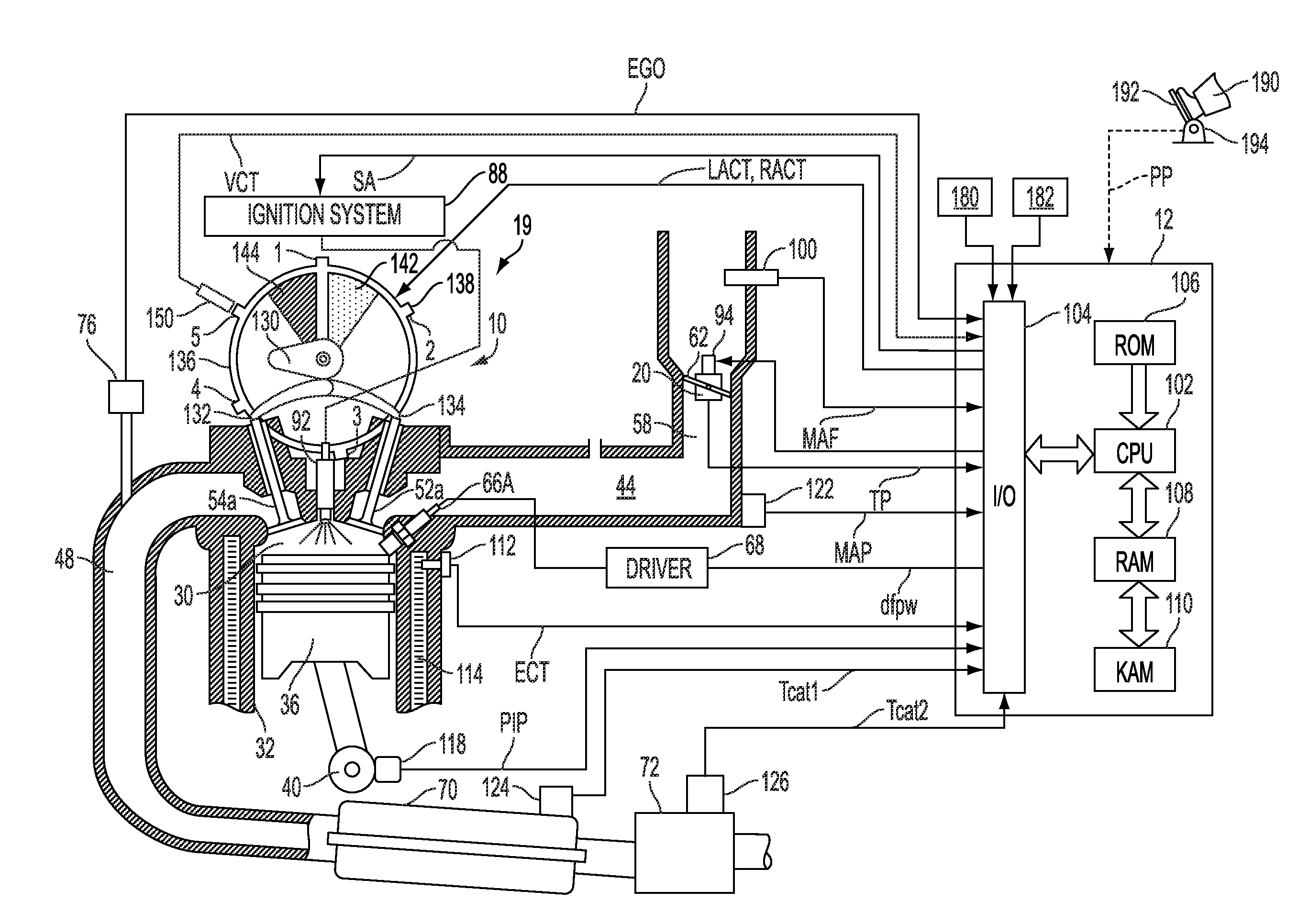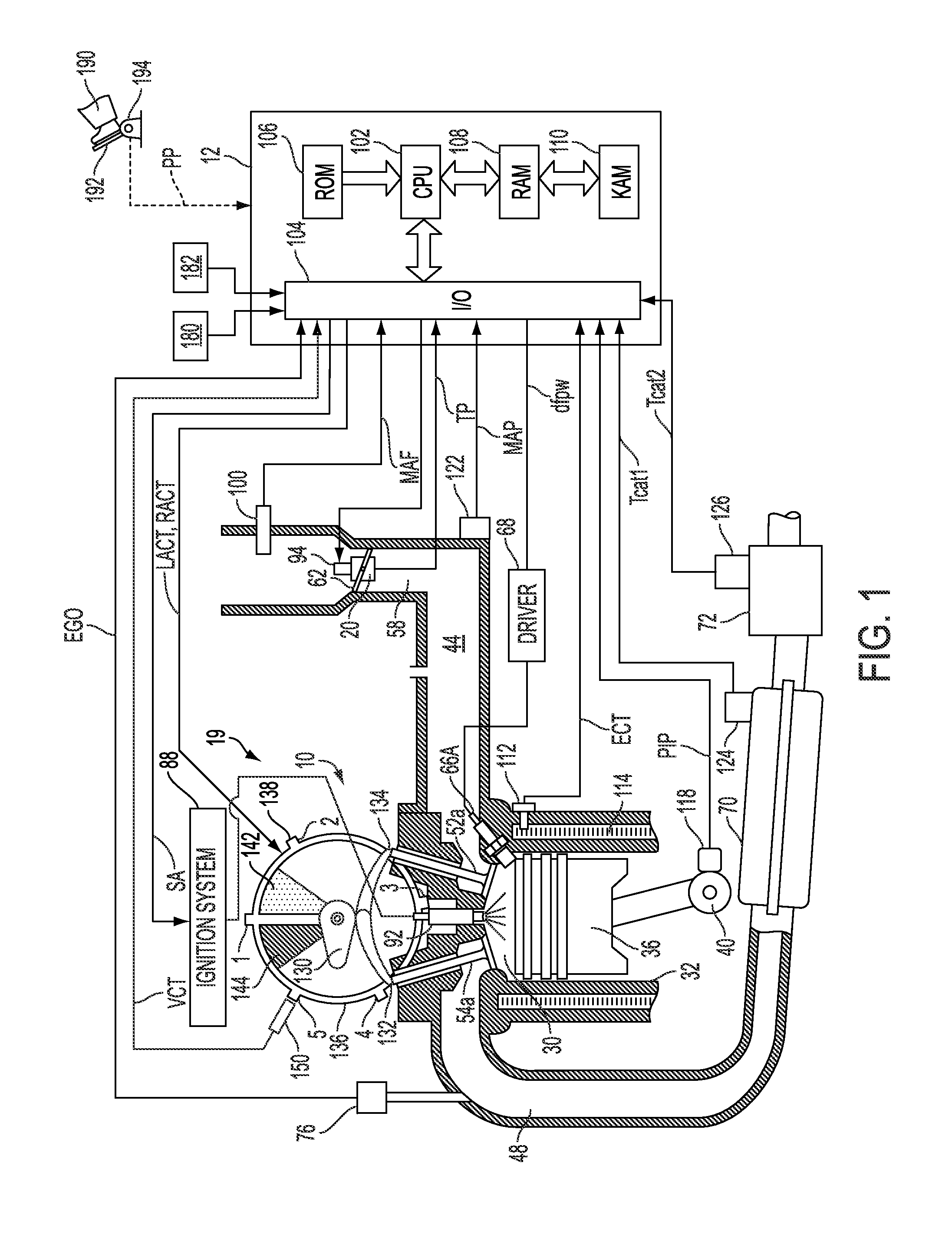Engine with Hydraulic Variable Valve Timing
a technology of variable cam timing and hydraulic valve, which is applied in the direction of machines/engines, non-mechanical valves, couplings, etc., can solve the problems of high oil leakage between advance and retard, and the inability to adjust the timing of the opa cam, etc., to achieve the effect of improving the fuel economy and emissions performance of the vehicle, and unacceptable performan
- Summary
- Abstract
- Description
- Claims
- Application Information
AI Technical Summary
Benefits of technology
Problems solved by technology
Method used
Image
Examples
Embodiment Construction
[0013]The following description relates to systems and methods for controlling an engine of a vehicle, the engine having a variable cylinder valve system, such as a variable cam timing (VCT). For example, the engine (such as the one illustrated in FIG. 1) may include a VCT phaser to adjust the cam timing (such as, an amount of cam retard or cam advance), where the phaser is included in a hydraulic system (such as described in FIG. 2). Further, the engine may include a corresponding hydraulic control system having a spool valve, as illustrated in FIGS. 3A and 3B. The hydraulic system and thus cam timing may be adjusted using a control algorithm, such as shown in FIG. 4, to reduce oil leakage and / or increase oil pressure during engine operation with the cam phaser in a base position. In one particular example, the routine includes adjusting the spool valve to a range away from a neutral / null position of the spool valve, such as illustrated in FIG. 5, during engine idling conditions wh...
PUM
 Login to View More
Login to View More Abstract
Description
Claims
Application Information
 Login to View More
Login to View More - R&D
- Intellectual Property
- Life Sciences
- Materials
- Tech Scout
- Unparalleled Data Quality
- Higher Quality Content
- 60% Fewer Hallucinations
Browse by: Latest US Patents, China's latest patents, Technical Efficacy Thesaurus, Application Domain, Technology Topic, Popular Technical Reports.
© 2025 PatSnap. All rights reserved.Legal|Privacy policy|Modern Slavery Act Transparency Statement|Sitemap|About US| Contact US: help@patsnap.com



